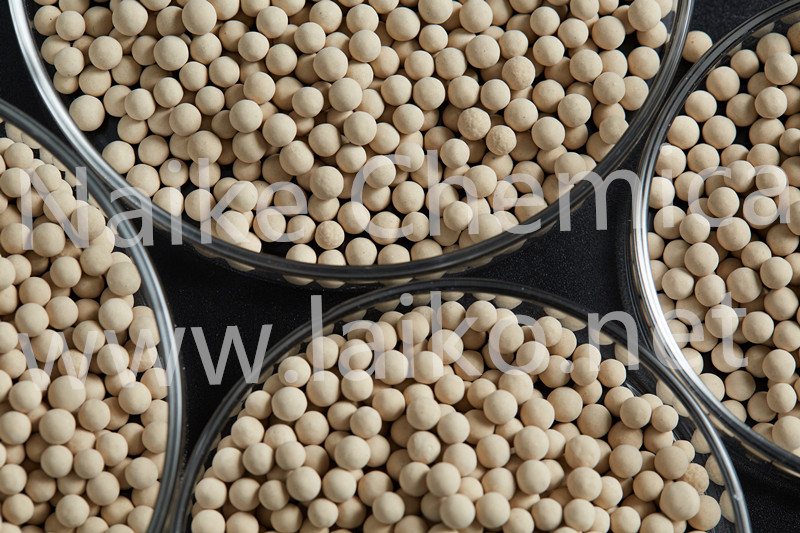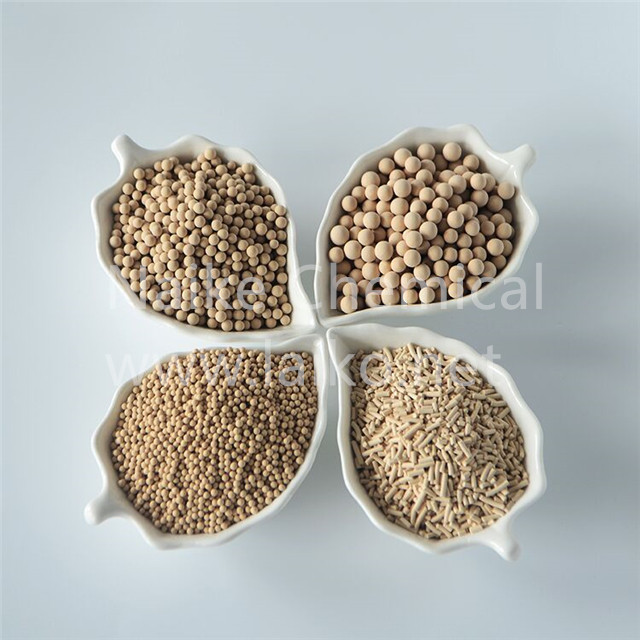What Is The Difference Between 3A, 4A, 5A, And 13X Molecular Sieves?
What is a molecular sieve
A molecular sieve is a type of mineral adsorbent, filter agent and drying
agent that can absorb certain molecules, which also called a mole sieve.
It is a synthetic crystalline aluminosilicates(zeolite), which can withstand high temperatures and has great thermal stability, thus it can be regenerated conveniently and be reused repeatedly.
The internal structure has many cavities that interconnected by pores which measured in angstroms, and are a uniform size similar in size to small molecules. That means larger molecules cannot enter through the material or be absorbed but the smaller ones can.
Molecular sieves are mainly used for adsorption, catalysis, drying, vacuum, separation and purification and are widely utilized in oil and gas industry, petrochemical industry, process industry, construction industry, metallurgical industry, electronics, national defense, environmental protection industry, pharmaceutical industry, agriculture, light industry industry, etc.

How do molecular sieves adsorb molecules
A molecular sieve is crystalline metal aluminosilicates having a three-dimensional interconnecting network of silica and alumina tetrahedra.
Alumina tetrahedra have a negative charge, to maintain electrical neutrality, there must be positively charged metal ions nearby to counteract its negative charge. The strong electric field between the positively charged metal ions and the negatively charged molecular sieve framework has a great influence on the adsorption performance of the molecular sieve.
The adsorption capacity of molecular sieve for polar substances is much stronger than that of non-polar substances. At the same time, due to the action of a strong electric field, materials containing double bonds or large π bonds also have considerable adsorption capacity through induced polarization. In general, the more charge the cation carries, the smaller the ion radius, the stronger the electric field generated, the greater the induction effect on the double bond, and the greater the adsorption capacity of such substances.
What is the difference between molecular sieve and silica gel
When compared to silica gel, although the is similar to silica gel, it is more effective because of its crystalline composition.
The molecular sieve maintains a very low dew-point (-50°C for 10% by weight of adsorbed water). At low humidity levels, the molecular sieve has an excellent adsorptive capacity, but silica gel performs poorly.
At room temperature (25°C) and 40% relative humidity, both of them have similar moisture retention capacities. But molecular sieve has a higher rate of adsorption when compared with similar quantities of silica gel.
At elevated temperatures, the adsorptive capacity of silica gel wanes. A molecular sieve, on the other hand, has excellent moisture retention properties because of its crystalline structure that strongly captures water even at higher temperatures up to 90°C.
What are the common types of molecular sieves
There are four main types of molecular sieves: 3A, 4A, 5A, and 13X. The type is dependent on the molecule’s chemical formula, and it determines the pore size of the molecular sieve.
The chemical formula is as follows:
3A: 0.45 K2O·0.55 Na2O·Al2O3·2SiO2·4.5H2O
4A: Na2O·Al2O3·2SiO2·4.5H2O
5A: 0.7 CaO·0.3 Na2O·Al2O3·2 SiO2·4.5H2O
13X: Na2O·Al2O3·(2.8±0.2) SiO2·(6~7)H2O
3A,4A and 5A zeolite pore size are 0.3nm/ 0.4nm/ 0.5nm, while 13X zeolite pore size is 10nm. These pores can adsorb molecules smaller than them, and larger pores mean the adsorption capacity is larger. A single molecular sieve can absorb 22% of its weight in moisture when it is used as a desiccant.
What is the difference between3A 4A 5A 13X molecular sieves application?
13X molecular sieve, also known as sodium X molecular sieve, is an alkali metal aluminum silicate with a certain degree of alkalinity and belongs to the solid base class. For , it is commonly used for commercial gas drying, air plant feed purification (simultaneous removal of H2O and CO2) and liquid hydrocarbon/natural gas desulfurization (removal of H2S and mercaptans).
are necessary desiccants for refining, polymerization, and deep drying of chemical gases and liquids in the petroleum and chemical industries. It is used to dry materials such as ethanol, air, refrigerants, natural gas, and unsaturated hydrocarbons. The latter include cracked gas, acetylene, ethylene, propylene, and butadiene.
are preferably used for static dehydration in closed liquid or gas systems, such as packaging of pharmaceuticals, electronic components, and perishable chemicals; water removal and drying of saturated hydrocarbon streams in printing and plastics systems. Adsorbed species include SO2, CO2, H2S, C2H4, C2H6, and C3H6.
are commonly used in the petroleum industry, particularly for the purification of gas streams and in chemical laboratories for the separation of compounds and drying reaction starting materials. They are mainly used as adsorbents for gases and liquids. They are utilized for drying natural gas and for desulfurization and decarbonization of gases. They are also used to separate mixtures of oxygen, nitrogen, and hydrogen as well as oil-wax n-hydrocarbons from branched and polycyclic hydrocarbons.

How is 3A and 5A made from 4A Molecular Sieve?
The production of 4A is relatively simple and does not require either high pressure or particularly high temperatures. Aqueous solutions of sodium silicate and sodium aluminate are mixed/stirred at 80 °C for a period of time and then “activated” by “baking” at 400 °C. 4A sieves are used as precursors for 3A and 5A sieves by cation exchange Sodium for potassium (for 3A) or calcium (for 5A).



